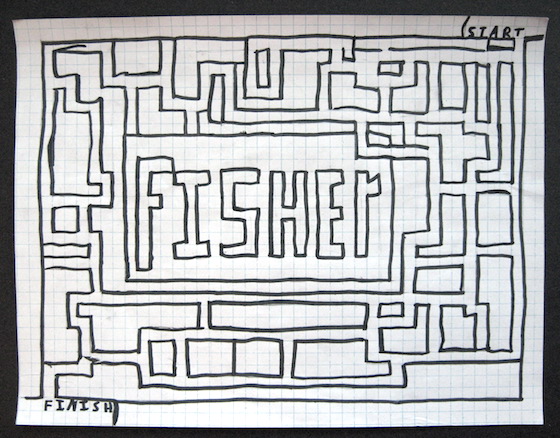
I was photographing my students’ maze drawings when, suddenly, I was overwhelmed with sadness. These drawings were nicely done. They emphasized the use of line. They helped me learn my 300+ students names. BUT they would never hold up in an art show.

It didn’t matter how much fun my students had creating them. It didn’t matter that they were still drawing mazes two weeks later, trying to outdo each other. The fact that they would be unsuccessful and overlooked at art shows had me questioning why we created them.
This had me thinking about the great debate that rages inside me with the planning of every lesson.
How do we balance having students create artwork that
is “art show worthy” with artwork that they love?
It really doesn’t matter how your classroom is structured. Every teacher, regardless of if they identify with TAB, teacher-guided lessons or anywhere in between, probably knows this struggle. The art show is how we are most often judged as successful or unsuccessful. We count blue, red, and white ribbons from the images we sent to all the contests and shows we entered. We question why the same lessons from the same teachers win year after year when our students are creating unique and wonderful images that reflect who they are.
If you are waiting for this article to provide the perfect answer to this great debate then you can stop reading now. There are no easy answers. However, we can dig a little deeper in order to find what we truly feel is most important.
Creating Artwork For SHOW

In the teacher-guided art room, art show artwork usually involves teaching a special lesson that takes a few weeks to complete. It is well-structured and well-tested. Most of the students are successful. The images are eye-catching and beautiful. Parents and school board members ooh and aah over what your students were able to create. Your students remember this lesson because of the way they felt when others honored what they had created.
In the TAB or modified choice room, this lesson is sometimes called a WOW project. Students reflect on what they have done earlier in the year and share their ideas with the teacher or classmates for critique and guidance before creating a larger, more finished piece. They work on their project until it is ready for display and then parents and school board members will ooh and aah over what the students were able to create. Your students remember this lesson because of the way they felt when others honored what they had created.
Creating Artwork For JOY

In all classrooms, TAB, modified choice and teacher-guided, these projects are usually smaller, easier projects that help the students build their skills. They are fun to do. These are the days that kids explore mixing paint colors and create piles of colorful paper but nothing more. These are the lessons that end with 5-second animation videos that only serve to get kids excited to explore further. These are the lessons filled with gesture drawing, giggles, and blind contour portraits. They won’t be winning any awards, but they will be filling our students with memories of the enjoyment found in creating.
I know that in my classroom this will forever be a topic I argue with myself about, although not out loud because that would be weird, right? I believe in the power of both types of lessons. I can name former students who never had a single piece of artwork sent to an art show but who still, to this day, love to tell me about what they are currently creating for enjoyment. I can also name former students who can still tell me the exact drawing they did in 5th grade that went to the fair and got a blue ribbon.
I believe that while this debate rages on, the best answer is probably found in making sure that we offer both kinds of lessons to our students. Then, we give them the joy that comes from creating art and the wonderful feeling of others recognizing their hard work and talents.
I’m curious. How do you plan your lessons? Do you…
A. Plan mostly with art shows and contests in mind
B. Plan mostly with the joy of creation in mind
C. Plan to honor a balance of joy and show
Magazine articles and podcasts are opinions of professional education contributors and do not necessarily represent the position of the Art of Education University (AOEU) or its academic offerings. Contributors use terms in the way they are most often talked about in the scope of their educational experiences.




